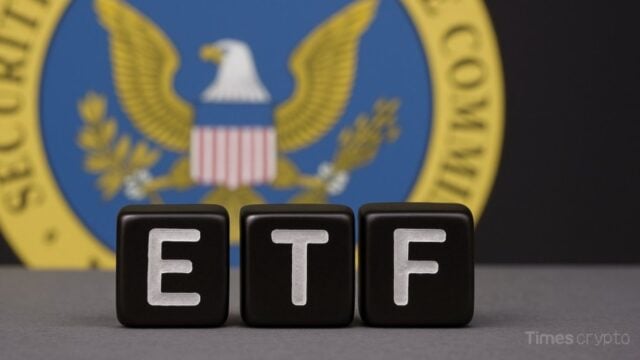Key Highlights:
- The stablecoins market capitalization has reached over $300 billion, with Tether being the largest with a current capitalization of $176.34 billion, USDC with $74 billion and the USDe with $14.83 billion.
- The USDT and USDC are no longer controlling 91.6% as in March 2024, but 83.6% as yield-generating stablecoins and bank-backed initiatives gain popularity among investors.
- Citigroup estimates that stablecoins might grow to $4 trillion by 2030 and more banks and governments are incorporating them into payment systems and the global financial systems.
The crypto market has achieved another milestone, with stablecoins surpassing $300 billion in capitalization; the first time in history, according to DeFiLlama. This boom highlights the increasing significance of dollar-pegged tokens in the global financial system as well as the changes of the balance of power in the sector.
Tether Leads But Loses Ground
Tether (USDT) is still leading the stablecoin market, with a value of $176.25 billion and a total market share of approximately 58.44%. Second in capitalization, USD Coin (USDC) by Circle has a capitalization of more than $74 billion. Meanwhile, a fairly new player, Ethena’s USDe, with yield element has moved to the third position in the top 5 stablecoins list with a circulation of $14.83 billion.
Although there is headline growth, the USDT and USDC market concentration has become weak. In total, Tether and Circle’s stablecoins have lost over 5% of their market share since October 2024. The two constituted 91.6% of the market in March 2024; they hold 83.6% today. Loss of dominance demonstrates the increasing competition with competing stablecoins with yield advantages and an increasing number of bank-led projects.
Also Read: Tether Scoops $1B in Bitcoin Amid BTC Price Consolidation
The End of the Duopoly?
The industry thinks the shift marks a new era. Analyst Nic Carter said the trend represented the demise of the stablecoin duopoly. According to him, the change is being led by two aspects. First, the emergence of yield-bearing tokens like USDe, which provide investors with returns greater than the price stability. Second, the entry of more traditional financial institutions after new regulatory clarity.
Carter observed that the GENIUS Act of the United States has paved the way to allow banks to establish their own digital dollar instruments. He reasoned no one bank alone could compete with Tether; yet through collusion of big banks, they might become worthy participants.
Banks Step Into the Arena
The momentum is already gaining traction in the U.S and Europe. Citigroup and JPMorgan have just announced a shared venture in stablecoins, and in Europe, ING, UniCredit, and seven other banks are working on a euro-based version, under the EU strategy of MiCA. This European consortium plans a launch date of 2026, and it is an indication of the seriousness with which traditional finance is looking at this industry.
Even though critics have expressed worries regarding risks posed by such tools as deposit runs, analysts like Carter have found strategic benefits in the issuance of stablecoins by banks. These are a response to the need to transform the banks from observers to banks as players that are redefining the infrastructure of digital payments.
Can Stablecoin Market Achieve Trillion-Dollar Valuation?
The degree of such a revolution is immense. Citigroup has increased its long-term estimates, and by 2030, it predicts that the stablecoins might have a $4 trillion market. Its updated base case estimate is at $1.9 trillion, with the bull case at $4 trillion, both significantly higher than its earlier projections.
Instead of replacing conventional banking, Citigroup maintains, stablecoins will become part of the industry by functioning next to the tokenized deposits. This is the combination, it says, that will not disrupt payments and capital markets but simply modernize them.
Geopolitics and Dollar Dominance
The policy circles are also leading stablecoins. The U.S. Treasury Secretary, Scott Bessent, has focused on their contribution towards the expansion of access to the dollar in the global market, which strengthens the reserve position of the currency. The Trump administration has followed a policy of integrating stablecoins into its digital asset policy to guarantee the U.S. leadership in the field.
In the meantime, state-linked stablecoins are being considered by other countries to widen the currency range of their currencies in international trade. This tendency hints at the fact that not only is the race commercial, but also geopolitical, and governments regard stablecoins as the means of financial power.
What This Means for Crypto
The industry of stablecoins is one of the most essential foundations of the digital asset market, and the ability to cross the mark of $300 billion formalizes this status. The emergence of yield-paying goods and tokens supported by banks may change the liquidity flows within crypto and will make the environment more competitive and heterogeneous. With banks and national governments joining the fray, the stablecoins seem to be the linking factor between the offline and online worlds and will transform the ecosystem in the coming years.







